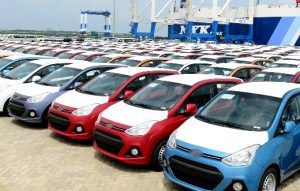The dilemma facing the government revolves around a crucial decision: whether to lift the ban on motor vehicle imports or maintain it. This decision carries significant financial implications, both in terms of foreign reserves and domestic revenue generation.

On one hand, if the ban is lifted as recommended by the committee comprising Treasury officials, it is projected that Sri Lanka could potentially lose up to US$ 800 million annually from its foreign reserves. This loss represents a substantial drain on the country’s foreign currency holdings, which could impact its ability to stabilize its economy and meet international financial obligations.
However, on the other hand, lifting the ban is expected to result in a substantial boost to domestic tax revenue. The government anticipates earning approximately Rs. 340 billion in tax revenue from vehicle imports, which could significantly contribute to meeting local revenue targets.
The decision ultimately falls on President Ranil Wickremesinghe, who serves as both the head of state and finance minister. He must weigh the immediate financial benefits of lifting the ban against the potential long-term consequences for the country’s foreign reserves and overall economic stability.
Sri Lanka’s gross official reserves grew from 431 million US dollars to 4,951 million US dollars in March this year according to data from the Central Bank.
Moreover, the decision is influenced by external factors, such as the revenue targets set by the International Monetary Fund (IMF). Meeting these targets is essential for maintaining international credibility and accessing financial assistance, but it requires a delicate balance between short-term fiscal gains and long-term economic sustainability.
Ultimately, the government’s decision must consider the complex interplay between foreign reserves, tax revenue, economic stability, and international financial commitments, all while striving to promote the country’s overall welfare and prosperity.







